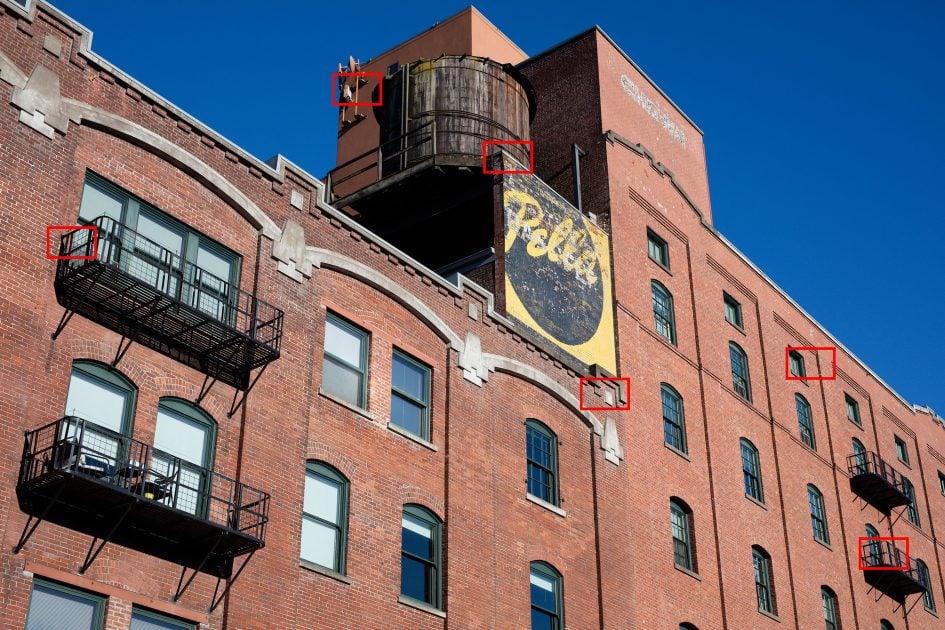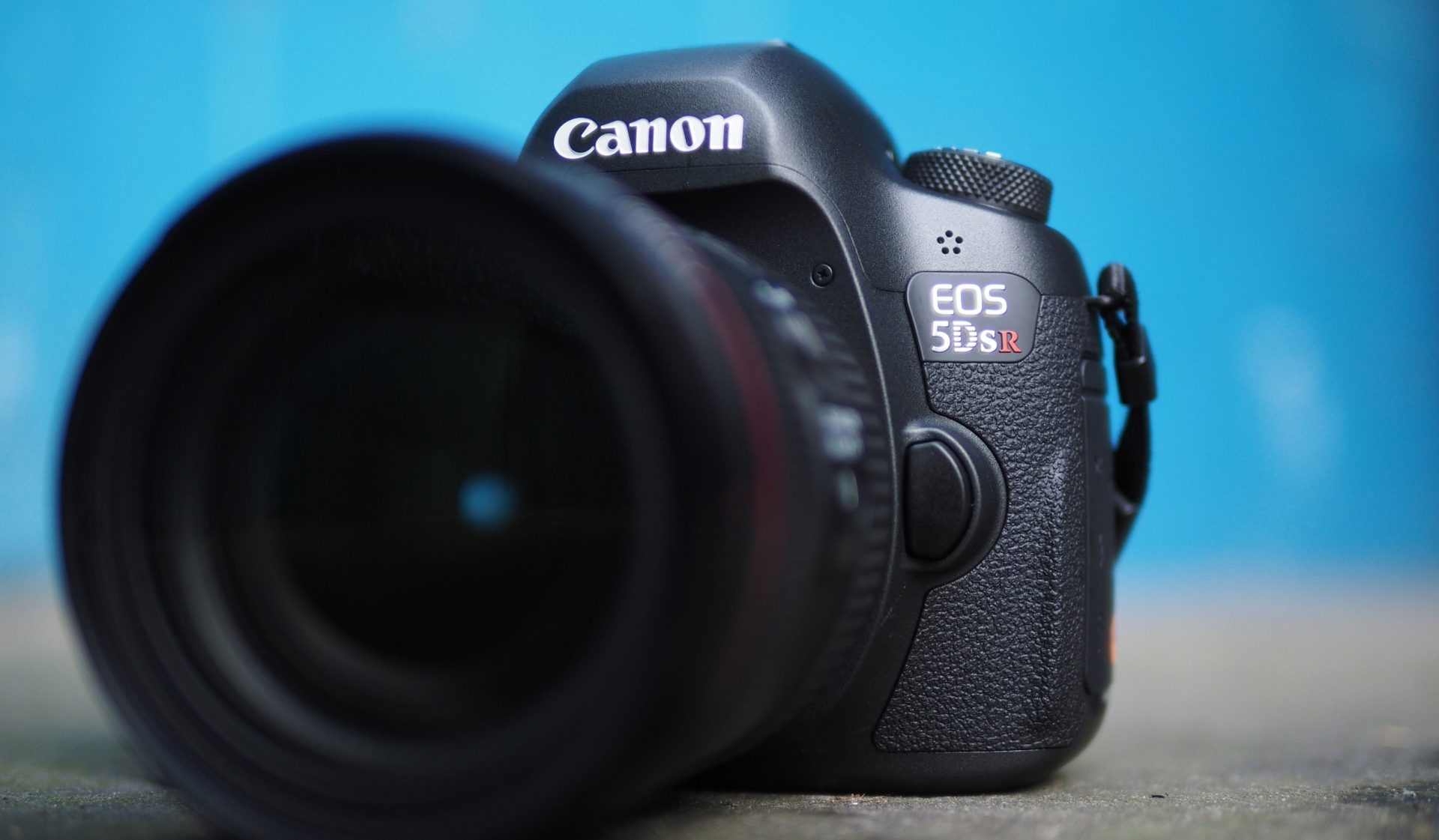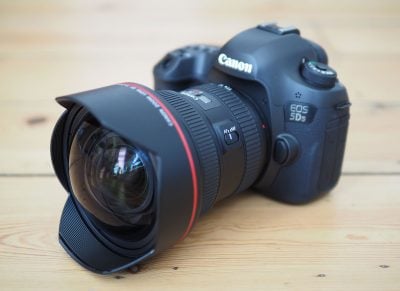Canon EOS 5DS R review
-
-
Written by Gordon Laing
Quality
To compare the real-life quality between the Sony Alpha A7r Mark II and Canon EOS 5DSr, I shot this scene with both cameras moments apart using the same lens, the Sigma ART 50mm f1.4 set to f8. Both cameras were also set to their base sensitivity of 100 ISO and metered the same exposure. I focused them using magnified Live View to avoid front or rear focusing issues, and used mirror-lockup on the 5DSr to avoid vibrations.
Many thanks to B&H Photo for the loan of the EOS 5DSr and Sigma lens. You can support me anytime you shop at B&H (for anything!) by first clicking through to them from my link here.
I used a third-party lens for these resolution tests to place the bodies on a level playing field and isolate their sensor and processing from optics and potential corrections. I chose the Sigma ART 50mm f1.4 as it’s one of the sharpest lenses I’ve tested (see my Sigma 50mm f1.4 ART review) and one which performs well on both bodies; I fitted it on the Sony using a Metabones Smart Adapter IV. There are of course benefits to using native lenses on each body, but the absence of a Sony FE 50mm or a Canon EF 55mm drew me to a third party solution. I’m also satisfied the Sigma lens here is delivering sufficient resolution for each body which is what I’m testing on this page.
Since image quality is what these cameras are all about, I’m skipping JPEG comparisons altogether on this page and jumping straight-in with a RAW comparison. I processed the RAW files from both cameras in Adobe Camera RAW using identical settings: Sharpening at 70 / 0.5 / 36 / 10, Luminance and Colour Noise Reduction both set to zero, and the Process to 2012 with the Adobe Standard profile, and the same daylight white balance. Lens Profile Corrections were disabled.
These settings were chosen to reveal the differences in sensor quality and isolate them from in-camera processing. The high degree of sharpening with a small radius and zero noise reduction is an extreme approach, but I chose them here to bright out all the detail and more easily reveal differences between the bodies.

In the full view above you can see the areas I’ve selected for reproduction below at 100%, indicated by the red rectangles. Judging from this particular example, there’s not a lot to choose between the A7r II and EOS 5DSr. Both are delivering highly detailed and crisp images thanks to their huge resolutions. I’m also pleased to report an absence of moire in any of the images from either camera I’ve examined, suggesting the absence of an OLPF (or in the case of the 5DSr, the cancellation of the filter) isn’t having the negative effect some feared.
Looking closely, the slightly higher resolution of the 5DSr means the crops show a slightly smaller area, but I can’t see any additional detail in this particular example, nor indeed in any others I’ve made with other subjects. When both files are processed identically using ACR, the EOS 5DSr is a little more contrasty and the A7r II a little sharper, but both can be adjusted as desired.
The fact is the EOS 5DSr and Alpha A7r Mark II are capable of resolving very similar degrees of real-life detail and I wouldn’t choose one over the other in this regard. A handful of photographers who make huge tonal adjustments in RAW may prefer Canon for its uncompressed RAW files, and I certainly wish Sony would offer an uncompressed RAW option just to satisfy a complete market, but personally speaking I’ve never had any issues with retrieving reasonable highlight or shadow details from Sony files. Your mileage may vary, but again in this comparison, I’m satisfied the A7r Mark II and EOS 5DSr share essentially the same real-life resolving power.

Above left: Sony A7r II, above right: Canon EOS 5DS R. Both with Sigma ART 50mm at f8. 100% crops from ACR RAW

Above left: Sony A7r II, above right: Canon EOS 5DS R. Both with Sigma ART 50mm at f8. 100% crops from ACR RAW

Above left: Sony A7r II, above right: Canon EOS 5DS R. Both with Sigma ART 50mm at f8. 100% crops from ACR RAW

Above left: Sony A7r II, above right: Canon EOS 5DS R. Both with Sigma ART 50mm at f8. 100% crops from ACR RAW

Above left: Sony A7r II, above right: Canon EOS 5DS R. Both with Sigma ART 50mm at f8. 100% crops from ACR RAW

Above left: Sony A7r II, above right: Canon EOS 5DS R. Both with Sigma ART 50mm at f8. 100% crops from ACR RAW
But what about noise at higher sensitivities? Scroll down for my noise results page, or if you’ve seen enough, check out my sample images!
Sony Alpha A7r Mark II vs Canon EOS 5DSr RAW noise
To compare noise levels under real-life conditions, I shot this scene with the Sony Alpha A7r Mark II and Canon EOS 5DSr at each of their ISO values. I fitted both cameras with the same Sigma ART 50mm f1.4 lens set to f8 and focused in Live View. DRO and Auto Lighting Optimiser were disabled and I used a sturdy tripod and mirror-lockup on the 5DSr to minimise vibrations. The full view is pictured below with the red rectangle indicating the area I cropped; note the Sony crops show a slightly larger area due to its slightly lower resolution.

Many thanks to B&H Photo for the loan of the EOS 5DSr and Sigma lens. You can support me anytime you shop at B&H (for anything!) by first clicking through to them from my link here.
Since image quality is what these cameras is all about, I’m skipping JPEG comparisons altogether on this page and jumping straight-in with a RAW comparison. I processed the RAW files from both cameras in Adobe Camera RAW using identical settings: Sharpening at 70 / 0.5 / 36 / 10, Luminance and Colour Noise Reduction both set to zero, and the Process to 2012 with the Adobe Standard profile, and the same interior white balance. Lens Profile Corrections were disabled here.
These settings were chosen to reveal the differences in sensor quality and isolate them from in-camera processing. The high degree of sharpening with a small radius enhances the finest details without causing undesirable artefacts, while the zero noise reduction unveils what’s really going on behind the scenes – as such the visible noise levels at higher ISOs will be much greater than you’re used to seeing in many comparisons, but again it’s an approach that’s designed to show the actual detail that’s being recorded before you start work on processing and cleaning it up if desired.
Both cameras metered the same exposures, so what you’re looking at below is directly comparable in every respect.
In the crops below the first thing you’ll see is the slightly larger area captured by the Sony due to its slightly lower resolution. As seen on my previous outdoor resolution test, you’ll also notice the Canon EOS 5DSr crops look a little more contrasty when files from both bodies are processed in ACR using the same settings.
Beyond this though, you’ll have to really pixel-peep to see any differences. With noise reduction disabled and sharpness turned-up high in this test, there’s inevitably a sprinkling of noise textures visible at low ISOs. It’s clear from 400 ISO onwards, although with NR enabled and sharpness turned-down somewhat, as you would for normal processing, it doesn’t present a problem for either body at this point.
But as explained above, I chose these aggressive settings to see what’s going on behind the scenes, and if you look carefully the Canon EOS 5DSr is exhibiting slightly higher chroma noise than the Sony, along with what looks like a coarser grain. This becomes apparent around 3200 ISO and above and while both bodies are still recording similar degrees of real-life detail, you’d need to apply higher NR to the Canon files to achieve a similarly clean result.
Since higher NR comes at the cost of lost detail, this gives the Sony A7r II a small edge over the Canon, although it may not be as significant as many hoped and the extended range up to 102400 ISO inevitably becomes very noisy when viewed up-close.
While some pixel-peepers may see sufficient difference to justify a buying decision, I’d say both the EOS 5DSr and A7r Mark II are delivering very similar results in terms of real-life resolution and noise in my tests. The decision between them should therefore be much more about their design, handling and features along with their overall system.

Above left: Sony A7r II, above right: Canon EOS 5DS R. Both with Sigma ART 50mm at f8. 100% crops from ACR RAW at 50 ISO

Above left: Sony A7r II, above right: Canon EOS 5DS R. Both with Sigma ART 50mm at f8. 100% crops from ACR RAW at 100 ISO

Above left: Sony A7r II, above right: Canon EOS 5DS R. Both with Sigma ART 50mm at f8. 100% crops from ACR RAW at 200 ISO

Above left: Sony A7r II, above right: Canon EOS 5DS R. Both with Sigma ART 50mm at f8. 100% crops from ACR RAW at 400 ISO

Above left: Sony A7r II, above right: Canon EOS 5DS R. Both with Sigma ART 50mm at f8. 100% crops from ACR RAW at 800 ISO

Above left: Sony A7r II, above right: Canon EOS 5DS R. Both with Sigma ART 50mm at f8. 100% crops from ACR RAW at 1600 ISO

Above left: Sony A7r II, above right: Canon EOS 5DS R. Both with Sigma ART 50mm at f8. 100% crops from ACR RAW at 3200 ISO

Above left: Sony A7r II, above right: Canon EOS 5DS R. Both with Sigma ART 50mm at f8. 100% crops from ACR RAW at 6400 ISO

Above left: Sony A7r II, above right: Canon EOS 5DS R. Both with Sigma ART 50mm at f8. 100% crops from ACR RAW at 12800 ISO

Above left: Sony A7r II with Sigma ART 50mm at f8. 100% crop from ACR RAW at 25600 ISO

Above left: Sony A7r II with Sigma ART 50mm at f8. 100% crop from ACR RAW at 51200 ISO

Above left: Sony A7r II with Sigma ART 50mm at f8. 100% crop from ACR RAW at 102400 ISO
Next check out my sample images or skip back to my verdict.

 The Canon EOS 5DS R is essentially an EOS 5D Mark III with double the resolution: no fewer than 50 Megapixels, making it the highest resolution full-frame DSLR to date. Sure there's a number of other small but useful upgrades, many focused on ensuring the resolution isn't squandered by vibration, but there's no denying the 5Ds is all about the sensor. Basically if you loved everything about the EOS 5D Mark III but wished it delivered bigger files, then this is the camera for you. The only question for those who want to stay committed to the EF system is whether to go for the 5Ds or the 5Ds R which cancels the effect of the low pass filter for potentially crisper results at the risk of greater moire. It depends on your subject and how bothered you are about moire. If you shoot natural landscapes or other organic shapes, there's normally little chance of the fine repeating patterns which can trigger moire, in which case go for the 5Ds R. But if you mostly shoot man-made textures like clothing, or even fine patterns in buildings, then moire can be an issue, in which case the 5Ds is probably a safer bet. If you're open to the idea of mirrorless though, I'd strongly recommend considering the Sony Alpha A7r Mark II.
The Canon EOS 5DS R is essentially an EOS 5D Mark III with double the resolution: no fewer than 50 Megapixels, making it the highest resolution full-frame DSLR to date. Sure there's a number of other small but useful upgrades, many focused on ensuring the resolution isn't squandered by vibration, but there's no denying the 5Ds is all about the sensor. Basically if you loved everything about the EOS 5D Mark III but wished it delivered bigger files, then this is the camera for you. The only question for those who want to stay committed to the EF system is whether to go for the 5Ds or the 5Ds R which cancels the effect of the low pass filter for potentially crisper results at the risk of greater moire. It depends on your subject and how bothered you are about moire. If you shoot natural landscapes or other organic shapes, there's normally little chance of the fine repeating patterns which can trigger moire, in which case go for the 5Ds R. But if you mostly shoot man-made textures like clothing, or even fine patterns in buildings, then moire can be an issue, in which case the 5Ds is probably a safer bet. If you're open to the idea of mirrorless though, I'd strongly recommend considering the Sony Alpha A7r Mark II.



